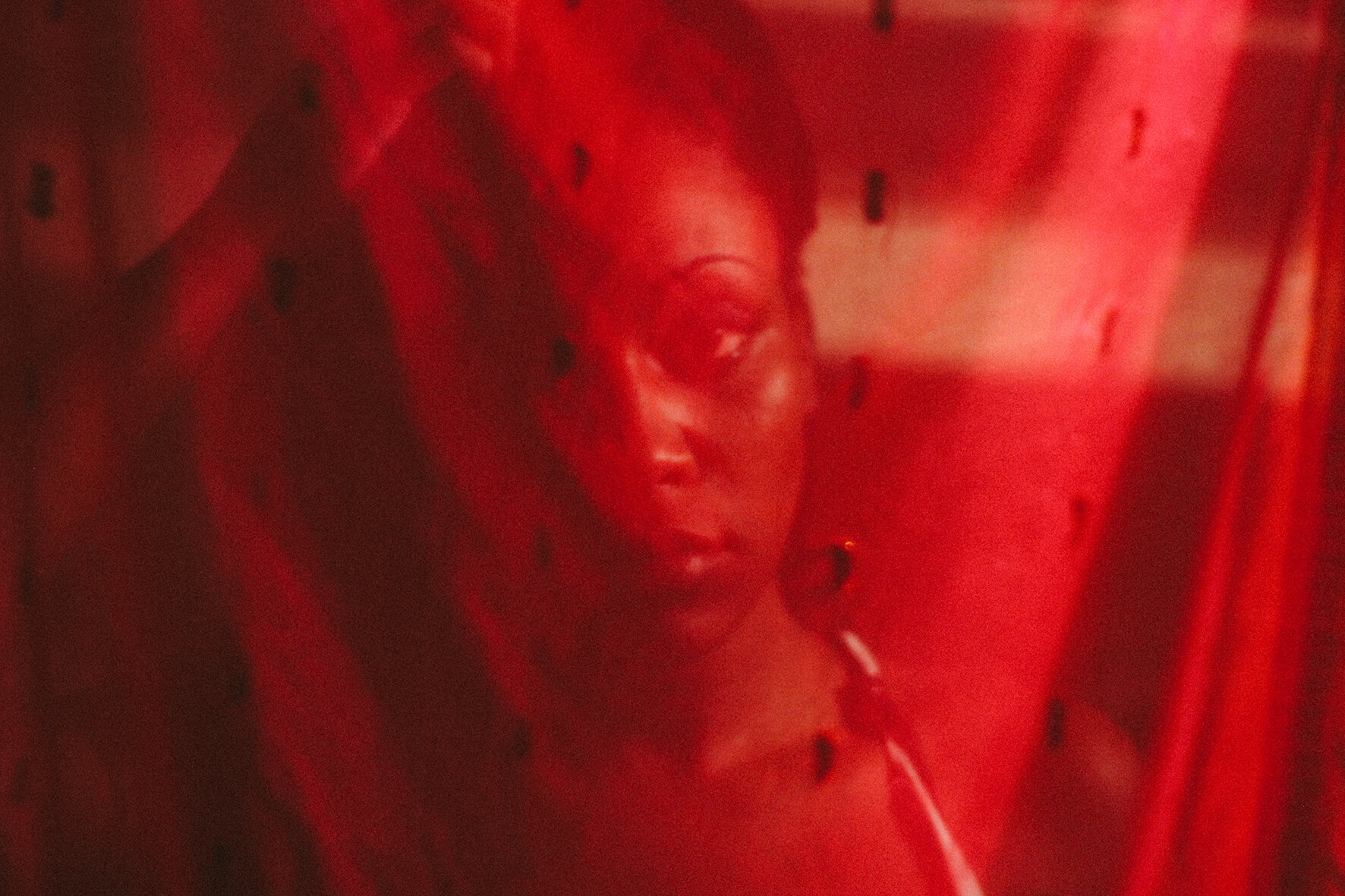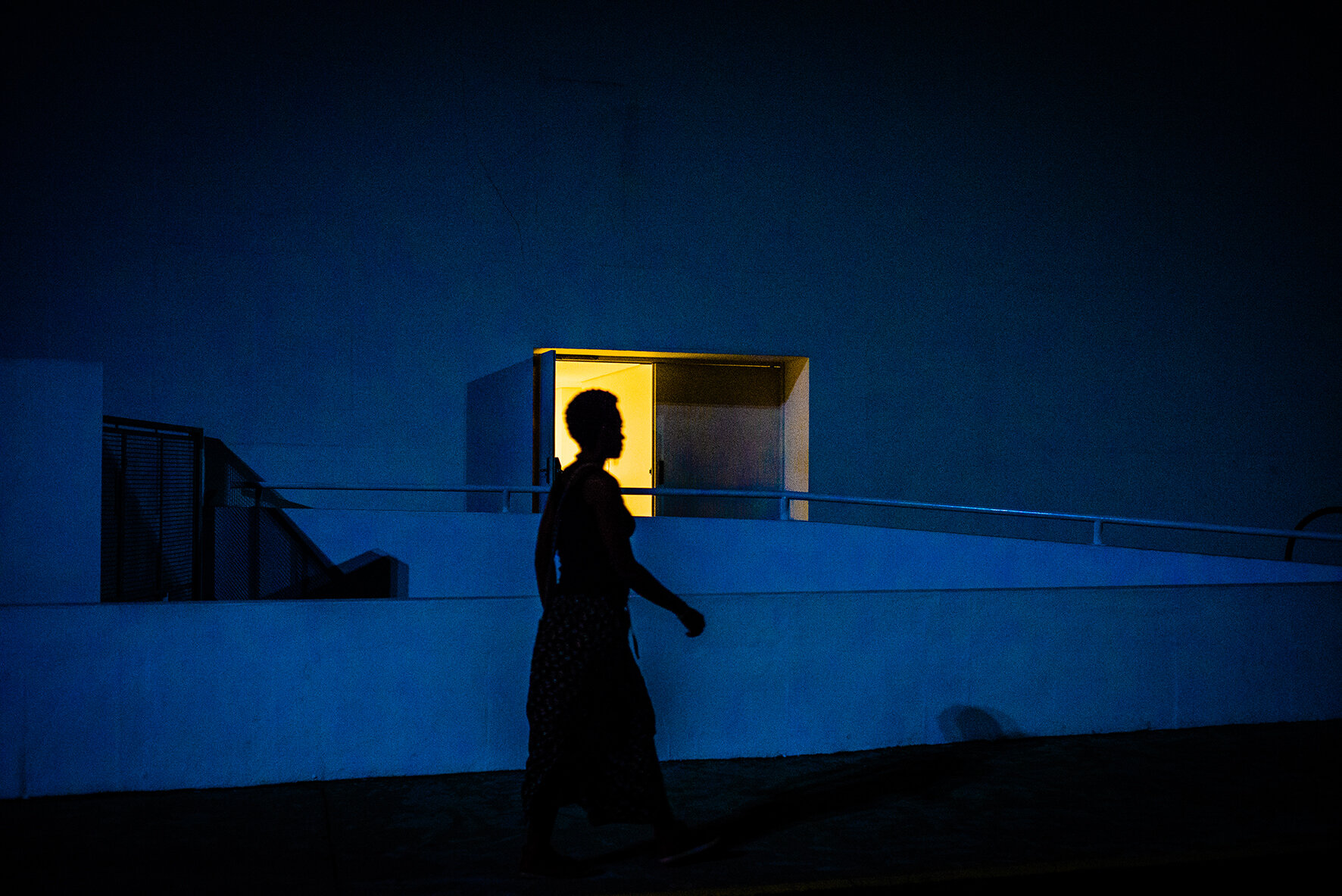HUDSON RODRIGUES
All Rights Reserved ©Hudson Rodrigues
The photographer from São Paulo talks to Retina Latinoamerica about his project “Bambas”, a vision of blackness that sways between the intimate and the universal through a journey of self-discovery.
BAMBAS
Who are the Bambas?
HR: Bambas are the Black people from the big bad world out there, you know. Bambas are all of those who can turn it around despite all the difficulties. Bambas will receive the minimum and do the maximum with it. Bambas create from the scraps and invent the new!
“Bambas are all of those who can turn it around despite all the difficulties.”
This project seems to have been born spontaneously from a flux centered in your immediate family that expanded outwards into wider questions regarding the representation of Blackness. Tell us more about this journey.
HR: That was pretty much it. In 2017 and 2018 I was really active in street photography documenting the corners of this world that I felt some affinity to. At the same time I was asking myself a lot of questions about my process, my photos and about how to tie everything up with a context. At that time I was feeling a lack of connectivity in my work. In reality the connection was there but I couldn’t see it yet! In 2017 I revisited all of my work in search of unconscious patterns, I knew they were there. So, when I was looking back at my production I noticed the impulse of portraying Blackness, most of the time in places I used to hang out. In that process I started seeing myself in the photos. After this realization I knew I had to photograph more and go dive into certain aspects. Those were still unclear but I felt I needed to go deeper and be more present in those places, with those people. For a period of time I would go out in the street with my mind focused on this project.
One of the characteristics of your work I love the most is the creation of a moment of complicity between the photographer and the photographed. It doesn’t matter if it is someone close to you or a fleeting moment in the night of the city. How do you work this relationship?
HR: I actually try to be myself in the purest and more direct way. I have never developed a technique or really think about it when it happens! I believe the greatest connection is in the eyes. I have always believed truth is in the eyes. With them I see and with them I seek the connectivity that is in the photos. The eyes of the person portrayed say a lot but the eyes of the photographer are the ones that make this connection happen. I let my eyes speak to their eyes and, in some cases, I am close to tears at the moment I have to press the shutter. That is because I try to give myself in fully and it is not very difficult because their reality is the same as mine most of the time.
You mention books like Subway (Bruce Davidson) and Laróyè (Mario Cravo Neto) as influences on your project. Apart from the aesthetic affinities with your own work, both of those series were created by white men who resorted to some level of private security to navigate those worlds, indicating the social separation between the artist and their theme. You are much closer to the reality in Bambas. Is this a relevant issue for you?
HR: Until you told me that I had no idea and I was surprised to know they had security, although there is really nothing new in this fact. I deeply love these projects and I will keep loving them even after knowing that! I am a Bamba, there is no “close to”, I am one of them! Yes, it is a relevant question. It is very important and it makes a lot of difference to whom is being portrayed. The proximity to the issues gives you a perception that goes beyond aesthetics. You end up photographing yourself in other people several times.
Music is an important inspiration in your work. You use to describe artistic practices in terms normally associated with popular music. Photography is historically elitist, or it was, at least until all of us had a cell phone on our hands. You made me think pop music language is more adequate to the democratic world of digital images. What do you think of this?
HR: Photography has been historically elitist and it still is! I believe it will be for a long time still. Cell phones and digital photography changed the landscape but I think it will take time because the people who are at the top of the institutions, museums and galleries still think in a outdated and elitist way. I was born in a musical environment but also because music is an art form that we all start consuming from the moment we are born, I believe that everyone has a clearer understanding of it, both the consumers and the artists. At a certain moment I noticed some musical situations made me understand photography better and how I could use some analogies to my favor. Music is so ingrained in people’s lives that using these analogies makes the discussion more accessible, breaking the elitist language that many want to maintain in photography! People have the habit of talking “intellectually” to make it more difficult for everyone to understand. I came from an unprivileged place, I am a Black man, I don’t like that and I know that excludes many people! When I use musical analogies I believe this is a way to be clearer so everyone can understand, and it really works.
Once there was this friend of mine who was feeling a little dispirited. He had sent a project to a competition, I can’t remember which, but he was a little upset for not being picked. When I looked at his project and looked at the competition, it was clear to me why, so I said: “Man, your project is a rock album and you are trying to get it to play in a hip-hop station, you get it?” I managed to explain it in a way that he will never forget! It was important to me that he understood his work wasn’t bad! Pay attention to your musical style and to which station you are sending it to!
“I have always believed truth is in the eyes. With them I see and with them I seek the connectivity that is in the photos.”
You worked as a graphic designer before migrating to photography and currently you are getting involved in film as a director. In which way these experiences connect to each other?
HR: This all happened in a natural way. The migration was smooth, one area complements the other. Many technical aspects you learn in one of them you can apply on the other and it will work. Currently, as a director, I understand things (of film production) more than I expected to understand and that’s because of my background in design and photography! Design made me understand spaces, openings, perceive aesthetics that please me and, more importantly, why they please me. Design gave me a space of action where I can connect many aspects of art, both in photography and cinema! Photography was one of the most satisfying things I started doing after graduating. I felt I could lay elements out in space, free from gravity, you know? I already did that with graphic design but they were different elements and on a flat surface! Photography eventually becomes a flat surface but before that it is scattered in a space that needs to be ordered and elaborated! All these activities connect themselves in many ways!
Bambas had considerable visibility in Brazil when it came out in 2018. A lot has happened since then. How is it to look back at this body of work from where you are today?
HR: Bambas will always be the apple of my eye because it was the project that allowed me to do my first exhibition, in a prestigious institution like MIS (Museum of Image and Sound). I will never forget the opening night because it was my mother’s birthday. Many things marked me in that exhibition! As it was my first, I don’t have any guidelines to compare its “visibility” but it had the role that I wish it could have had and that was the most important thing. I could bring Black people who had never been to MIS before, that in itself was a victory for me! Nowadays when I look at the work I let out a sigh, I feel it as alive as before, it will accompany me my whole life. That’s something that will only end when I’m finished!
All Rights Reserved ©Hudson Rodrigues









